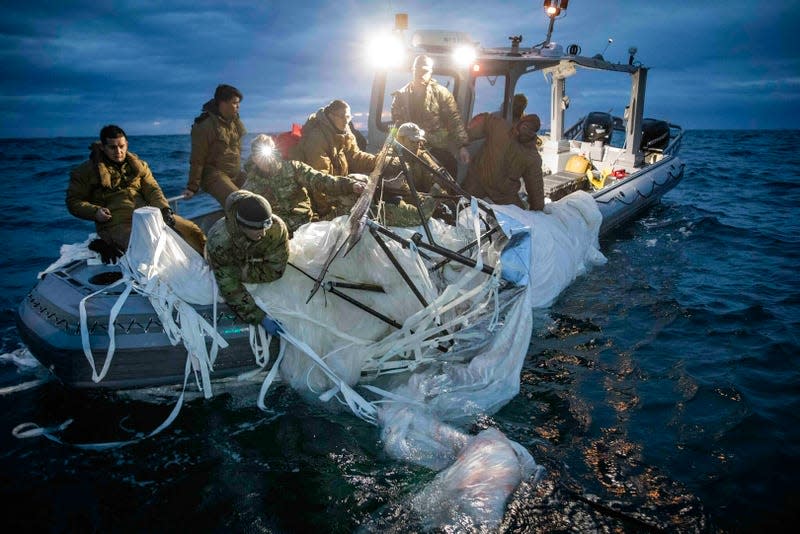Why the U.S. Is Suddenly Shooting Down So Many Balloons

At 2:42 pm Eastern on Sunday, February 12, mere hours before the Super Bowl kickoff, a pilot flying an F-16 fighter jet shot an AIM 9X missile at an airborne object 20,000 feet above Lake Huron. The pilot did so at the direction of President Biden and the Secretary of Defense, and the event marked the fourth shoot-down over U.S. airspace in eight days.
“Based on its flight path and data we can reasonably connect this object to the radar signal picked up over Montana, which flew in proximity to sensitive DOD sites,” reads a Department of Defense statement published February 12. “We did not assess it to be a kinetic military threat to anything on the ground, but assess it was a safety flight hazard and a threat due to its potential surveillance capabilities.”
Read more
While militaries have used balloons for war dating back to at least 1794, using balloons for covert peacetime surveillance is a relatively more recent phenomena. In the Cold War, the United States sent balloons with film cameras across the Soviet Union and China, hoping to capture evidence of massive military industrial undertakings. Project Genetrix, a program that launched over 400 balloons in early 1956, ended weeks after it started, with only 40 balloons recovered and a very incomplete picture derived from what they could see. Wind, as propulsion, can certainly carry lighter-than-air objects across the sky, but steering becomes difficult. The advent of high-altitude spy planes and then orbital satellite surveillance largely superseded the role of untethered surveillance balloons for military intelligence.
That better, more controllable options exist for military surveillance doesn’t change the reality that the U.S. is now apparently detecting and shooting down balloon-like objects in territorial skies.
During an on-the-record call with the press that occurred while the Super Bowl was on TV, General Glen VanHerck, Commander of North American Aerospace Defense Command (NORAD) and U.S. Northern Command (NORCOM), offered one explanation.
“[R]adars essentially filter out information based on speed. So you can set various gates, we call them velocity gates, that allow us to filter out low-speed clutter. So if you have radars on all the time [...] looking at anything from zero speed up to, say, 100, you would see a lot more information,” said VenHerck.
“We have adjusted some of those gates to give us better fidelity on seeing smaller objects. You can also filter out by altitude. And so, with some adjustments, we’ve been able to get a better a categorization of radar tracks now. And that’s why I think you’re seeing these overall. Plus, there’s a heightened alert to look for this information.”

 Yahoo Autos
Yahoo Autos 